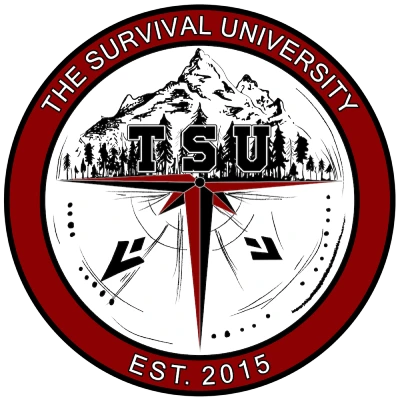Cart

Content source: Centers for Disease Control and Prevention
Note
A PDF version of this document with information conveyed visually in table format is available (please note that the PDF is not accessible for screen readers; this HTML page contains the same information as that found within the PDF): A Guide to Drinking Water Treatment and Sanitation for Backcountry and Travel Use – PDF [PDF – 896 kb].
Introduction
This document should only serve as a guide for individuals intending to use untreated or poorly treated water as a drinking source. This document may also aid travelers and backcountry water users in researching drinking water treatment methods. Except for boiling, few of the water treatment methods are 100% effective in removing all pathogens.
- Protozoa – Cryptosporidium
- Potential health effects from ingestion of water contaminated with Cryptosporidium are:
- Gastrointestinal illness (for example, diarrhea, vomiting, cramps).
- Sources of Cryptosporidium in drinking water are:
- Human and animal fecal waste.
- Methods that may remove some or all of Cryptosporidium from drinking water are:
- Boiling (Rolling boil for 1 minute) has a very high effectiveness in killing Cryptosporidium;
- Filtration has a high effectiveness in removing Cryptosporidium when using an absolute less than or equal to 1 micron filter (NSF Standard 53 or 58 rated “cyst reduction / removal” filter);
- Disinfection with iodine or chlorine is not effective in killing Cryptosporidium;
- Disinfection with chlorine dioxide has a low to moderate effectiveness in killing Cryptosporidium;
- Combination filtration and disinfection has a very high effectiveness in removing and killing Cryptosporidium when used with chlorine dioxide and an absolute less than or equal to 1 micron filter (NSF Standard 53 or 58 rated “cyst reduction / removal” filter).
- Potential health effects from ingestion of water contaminated with Cryptosporidium are:
- Protozoa – Giardia intestinalis (also known as Giardia lamblia)
- Potential health effects from ingestion of water contaminated with Giardia are:
- Gastrointestinal illness (for example, diarrhea, vomiting, cramps).
- Sources of Giardia in drinking water are:
- Human and animal fecal waste.
- Methods that may remove some or all of Giardia from drinking water are:
- Boiling (Rolling boil for 1 minute) has a very high effectiveness in killing Giardia;
- Filtration has a high effectiveness in removing Giardia when using an absolute less than or equal to 1 micron filter (NSF Standard 53 or 58 rated “cyst reduction / removal” filter);
- Disinfection with iodine or chlorine has a low to moderate effectiveness in killing Giardia;
- Disinfection with chlorine dioxide has a high effectiveness in killing Giardia;
- Combination filtration and disinfection has a very high effectiveness in removing and killing Giardia when used with chlorine dioxide and an absolute less than or equal to 1 micron filter (NSF Standard 53 or 58 rated “cyst reduction / removal” filter).
- Potential health effects from ingestion of water contaminated with Giardia are:
- Bacteria – (for example, Campylobacter, Salmonella, Shigella, E. coli)
- Potential health effects from ingestion of water contaminated with bacteria are:
- Gastrointestinal illness (for example, diarrhea, vomiting, cramps).
- Sources of bacteria in drinking water are:
- Human and animal fecal waste.
- Methods that may remove some or all of bacteria from drinking water are:
- Boiling (Rolling boil for 1 minute) has a very high effectiveness in killing bacteria;
- Filtration has a moderate effectiveness in removing bacteria when using an absolute less than or equal to 0.3 micron filter;
- Disinfection with iodine or chlorine has a high effectiveness in killing bacteria;
- Disinfection with chlorine dioxide has a high effectiveness in killing bacteria;
- Combination filtration and disinfection has a very high effectiveness in removing and killing bacteria when used with iodine, chlorine, or chlorine dioxide and an absolute less than or equal to 0.3 micron filter (NSF Standard 53 or 58 rated “cyst reduction / removal” filter).
- Potential health effects from ingestion of water contaminated with bacteria are:
- Viruses – (for example, enterovirus, hepatitis A, norovirus, rotavirus)
- Potential health effects from ingestion of water contaminated with viruses are:
- Gastrointestinal illness (for example, diarrhea, vomiting, cramps), hepatitis, meningitis.
- Sources of viruses in drinking water are:
- Human and animal fecal waste.
- Methods that may remove some or all of viruses from drinking water are:
- Boiling (Rolling boil for 1 minute minimum) has a very high effectiveness in killing viruses;
- Filtration is not effective in removing viruses;
- Disinfection with iodine or chlorine has a high effectiveness in killing viruses;
- Disinfection with chlorine dioxide has a high effectiveness in killing viruses;
- Disinfection has a high effectiveness in killing viruses when used with iodine, chlorine, or chlorine dioxide.
- Potential health effects from ingestion of water contaminated with viruses are:
Things to Remember
- Boiling can be used as a pathogen reduction method that should kill all pathogens. Water should be brought to a rolling boil for 1 minute. At altitudes greater than 6,562 feet (greater than 2000 meters), you should boil water for 3 minutes.
- Filtration can be used as a pathogen reduction method against most microorganisms, depending on the pore size of the filter, amount of the contaminant, particle size of the contaminant, and charge of the contaminant particle. Manufacturer’s instructions must be followed. More information on selecting an appropriate water filter can be found at http://www.cdc.gov/crypto/gen_info/filters.html. Only filters that contain a chemical disinfectant matrix will be effective against some viruses.
- Disinfection can be used as a pathogen reduction method against microorganisms. However, contact time, disinfectant concentration, water temperature, water turbidity (cloudiness), water pH, and many other factors can impact the effectiveness of chemical disinfection. The length of time and concentration of disinfectant varies by manufacturer and effectiveness of pathogen reduction depends on the product. Depending on these factors, 100% effectiveness may not be achieved. Manufacturer’s instructions must be followed.
- If boiling water is not possible, a combination of filtration and chemical disinfection is the most effective pathogen reduction method in drinking water for backcountry or travel use. Manufacturer’s instructions must be followed.
Other treatment methods can be effective against some of the above pathogens:
- Ultraviolet Light (UV Light) can be used as a pathogen reduction method against some microorganisms. The technology requires effective prefiltering due to its dependence on low water turbidity (cloudiness), the correct power delivery, and correct contact times to achieve maximum pathogen reduction. UV might be an effective method in pathogen reduction in backcountry water; there is a lack of independent testing data available on specific systems. Manufacturer’s instructions must be followed.
- MIOX® systems use a salt solution to create mixed oxidants, primarily chlorine. Chlorine has a low to moderate effectiveness in killing Giardia, and a high effectiveness in killing bacteria and viruses. Manufacturer’s instructions must be followed.
Important
Water that has been disinfected with iodine is NOT recommended for pregnant women, people with thyroid problems, those with known hypersensitivity to iodine, or continuous use for more than a few weeks at a time.
Sanitation
In addition to using the appropriate drinking water treatment methods listed above, you can also protect yourself and others from waterborne illness in the backcountry or while traveling by paying attention to good sanitation practices:
- Burying human waste 8 inches deep and at least 200 feet away from natural waters.
- Practicing good personal hygiene. Wash hands before handling food, eating, and after using the toilet.
Leave a Comment
CDC Backcountry Water
CDC Backcountry Water: A Guide to Drinking Water Treatment and Sanitation for Backcountry Travel Use Content source: Centers for Disease Control and Prevent
Understanding Water Survival
Learn the importance of water survival techniques to survive cold water immursion, sinking vehicle accidents, and floods.

